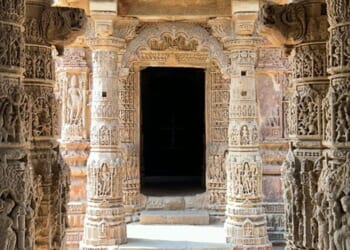(LifeSiteNews) — Four times a year, the Roman Liturgy marks the Ember Days: three days of fasting and penance.
Rooted in Roman custom, they echoed both Jewish fasts and the Roman agricultural festivals, which the Church preserved and sanctified in four seasonal fasts. In Rome, these festivals marked:
- December’s sowing of seeds
- June’s summer harvest
- September’s vintage of grapes.
In time, the Church introduced a fourth set of Ember Days:
- Spring’s emergence of shoots and buds.
By this sanctification of time, the Church retained the natural rhythms of the year but gave them a higher purpose: not merely to mark the cycle of crops but to consecrate the faithful through fasting and prayer. Each quarterly fast offers a moment to “reset” our lives, to do penance for the past season, to pray for the next, and to reconsecrate ourselves to God.
The Jews also kept fasts of this kind, and several authorities hold that the Ember Days are apostolic in origin – linked above all with the apostles Peter and Paul in Rome.
Of the four sets of Ember Days, none shows this Jewish inheritance more clearly than those of September.
And yet by ancient custom, they are kept in the week after the Feast of the Exaltation of the Holy Cross, so that these days of fasting and penance are illuminated by the sign of Christ’s sacrifice and victory.
The September Ember Days
The Mosaic Law appointed several feast days in “the seventh month” (Tishrei). These included:
- The Feast of Trumpets (Rosh Hashanah)
- The Day of Atonement (Yom Kippur)
- The Feast of Tabernacles (Sukkot).
The first two became known as “The High Holy Days,” and Jews also came to mark “10days of repentance” (Aseret Yemei Teshuvah) between them.
Tishrei falls in our September-October. Though September is now the ninth month, its name recalls its place as the seventh in the old Roman 10-month calendar.
The Church has made clear that it is forbidden to observe these feasts, and St Thomas Aquinas teaches that it would be a mortal sin to do so, now that what they foreshadowed as been fulfilled. Nonetheless, the Church’s Ember Days in September align strikingly with these “most solemn and most holy” feasts of the Mosaic Law, recalling what they celebrated, and drawing their themes, now fulfilled, into the liturgy.
Ember Wednesday and the Feast of Trumpets (Rosh Hashanah)
Rosh Hashanah was marked by the assembly of Israel to hear the blowing of the shofar, the ram’s horn. Leviticus commands:
And the Lord spoke to Moses, saying: Say to the children of Israel: The seventh month, on the first day of the month, you shall keep a sabbath, a memorial, with the sound of trumpets, and it shall be called holy. You shall do no servile work therein, and you shall offer a holocaust to the Lord. (Leviticus 23.23-25)
The Hebrew name means “the head of the year,” and marks the start of the civil year. It is striking that the Byzantine rite also begins its liturgical year in September.
Jewish tradition associates the feast with the creation of the world (or of Adam and Eve) and with the Last Judgment. It was also on this day that Esdras (Ezra) the Scribe assembled the newly returned exiles from Babylon to hear the Law read aloud. Hearing the books read, the people were moved to tears of repentance, and recommitted themselves to the Mosaic Law.
The Roman Missal for Ember Wednesday echoes these themes. The Introit sings of trumpets:
Rejoice to God our helper: sing aloud to the God of Jacob: take a pleasant psalm with the harp; blow the trumpet in the beginning of the month, for it is a commandment in Israel, and a judgment to the God of Jacob. (Ps. 80)
The first Lesson speaks of the harvest, vineyards, and vintages; the second recounts Esdras’ calling of the people back to both repentance and joy, and submission to God.
Thus, the Church, the New and true Israel, assumes the Old Testament events and – in the same seventh month – applies them to her children on the Ember Days.
Ember Friday and the Ten Days of Repentance (Aseret Yemei Teshuvah)
The “Ten Days of Repentance,” which follow Rosh Hashanah and prepare for the Day of Atonement, are not explicitly mandated in the Old Testament. They appear in later sources, as early as the Jerusalem Talmud (finalized around 200 AD).
Yet the Church’s liturgy, along with the apostolic origins of the Ember Days, suggests that they may go back further. By placing Ember Wednesday in parallel with the Feast of Trumpets and Ember Saturday with the Day of Atonement, the Roman tradition implicitly suggests that this intervening period of penance was not a later rabbinic development, but part of the authentic Israelite religion.
The liturgy of Ember Friday itself centres on repentance and a return to God. The Introit is as follows:
Let the heart of them rejoice that seek the Lord: seek ye the Lord and be strengthened: seek his face evermore.
The Lesson is taken from the Prophet Osee, and begins:
Thus saith the Lord God: Return, O Israel, to the Lord thy God; for thou has fallen down by thy iniquity. Take with you words, and return to the Lord; say to Him, Take away all iniquity, and receive what is good, that we may render the calves of our lips.
It proceeds to promise blessings for those who return to God in repentance. The Gospel drives the point home with the story of the repentant woman who anoints Christ’s feet in the house of the Pharisee, of whom he declares:
Many sins are forgiven her, because she hath loved much.
So too the Church, in these September Ember Days, calls her children to return to the Lord with contrition, echoing Israel’s days of repentance.
Ember Saturday and the Day of Atonement (Yom Kippur)
The Day of Atonement, held 10 days after the Feast of Trumpets, was the holiest day of the Jewish year. It demanded fasting, penance, communal prayer, and the confession of sin.
Before the destruction of the Jerusalem Temple in 70 AD, the high priest prepared by seclusion and purification. On the day itself he sacrificed a bull for his own sins, laying hands upon it and confessing aloud. As he pronounced the divine name, priests, Levites, and people fell prostrate in adoration.
He then drew lots over two goats: one for the Lord, the other for “Azazel.” This latter was the “scapegoat,” its horns marked with a scarlet cloth. Entering the Holy of Holies, the high priest offered incense, then sprinkled the blood of the sacrifice before the veil and on the altar.
At last he laid hands on the scapegoat, confessed the sins of Israel over it, and it was driven into the wilderness to die. According to rabbinic tradition, the scarlet cloth would then turn white as a sign of God’s good pleasure, while other offerings and readings completed the service.
It is providential that these September Ember Days are traditionally kept in the week after the Exaltation of the Holy Cross. Though Christ’s sacrifice is usually linked to Passover, the parallels with Yom Kippur are striking – and they are emphasized by the liturgy of Ember Saturday.
The Introit and Collect speak of prostration and atonement. The first Lesson recounts the institution of the Day of Atonement in Leviticus ; following Lessons describe the blessings that flow from this propitiatory sacrifice.
Above all, the Epistle to the Hebrews – a large part of which is about the Day of Atonement – explains how Christ has fulfilled everything foreshadowed by this festival through the sacrifice of the Cross:
Brethren: There was set up a tabernacle in the outer part of which were the lampstand and the table and the showbread, and this is called the Holy Place; but beyond the second veil was the tabernacle which is called the Holy of Holies, having a golden censer and the ark of the covenant, overlaid on every side with gold. (…)
Such then being the arrangements, the priests always used to enter into the first tabernacle to perform the sacred rites; but into the second tabernacle the high priest alone entered once a year, not without blood, which he offered for his own and the people’s sins of ignorance.
The Holy Ghost signified by this that the way into the Holies was not yet thrown open while the first tabernacle was still standing.
This first tabernacle is a figure of the present time, inasmuch as gifts and sacrifices are offered that cannot perfect the worshipper in conscience, since they refer only to food and drink and various ablutions and bodily regulations imposed until a time of reformation.
But when Christ appeared once for all through the greater and more perfect tabernacle, not made by hands, that is, not of this creation, nor again by virtue of blood of goats and calves, but by virtue of His own Blood, into the Holies, having obtained eternal redemption.”
Hence the veil was torn at his death. Even the Talmud records that, 40 years before the Temple’s destruction – around the time of the crucifixion – the miracle of the scarlet thread ceased, and many other ominous signs conveyed the displeasure of God with the Temple religion, and as omens of its destruction.
Why was the Temple destroyed? Our Lord prophesied early in St John’s Gospel:
(T)he hour cometh, when you shall neither on this mountain, nor in Jerusalem, adore the Father (…) the hour cometh and now is, when the true adorers shall adore the Father in spirit and in truth. For the Father also seeketh such to adore him. (John 4.21-3)
The perfect adoration of God, in spirit and in truth, was that which Christ rendered on the Cross; and this same sacrifice is perpetuated in the world today in the sacrifice of the Mass.
Appropriately, the Church long ordained priests on Ember Saturdays – including on this commemoration of the most priestly of Mosaic feasts in September – so that Christ’s sacrifice might continue to be offered on her altars.
Once again, therefore, we see the Church taking her place as the New Israel, commemorating on Ember Saturday the Day of Atonement which Christ has fulfilled, commanding her children to fast as the Israelites did, and ordaining new ministers to the “greater and more perfect tabernacle” in the priesthood of Christ.
Conclusion: Ember Saturday and Sukkot
We should note that the Day of Atonement is not the only Mosaic festival recalled on Ember Saturday. The liturgy also reflects the Feast of Tabernacles (Sukkot), celebrated a few days later.
Sukkot marked the culmination of the cycle of the Mosaic feasts. God commanded Israel to dwell for a week in tabernacles – booths or shelters. The purpose of this, God said, was to remind Israelites of their wandering in the wilderness for forty years, after having been delivered from Egypt. That wandering, though a punishment, was still lived under God’s protection; and this is what was commemorated at Sukkot.
In this sense, the Feast of Tabernacles was both bitter and sweet – a pattern also seen in the Ember Days and in our earthly pilgrimage. The Time after Pentecost, representing our own era of the Church Militant, draws toward its close as these Ember Days occur – along with the year itself. The Church’s liturgy becomes increasingly focused on the end of this world, and the approach of the eternal tabernacle in heaven. She teaches us that we are almost there, yet still wandering a little longer.
Like Israel, we wander under the protection of God, nourished by Christ. He himself kept the feast, declaring:
(O)n the last, and great day of the festivity, Jesus stood and cried, saying: If any man thirst, let him come to me and drink. He that believeth in me, as the scripture saith: Out of his belly shall flow rivers of living water. (John 7.37-8)
The prophet Zacharias spoke of a day in which all the nations of the world will go up to Jerusalem, to keep the Feast of Tabernacles (Zach. 14.16).
This day has already come, in the New Jerusalem and true tabernacle: and these festivals are fulfilled in the Roman Catholic Church, where all nations are gathered to worship in spirit and in truth.
















